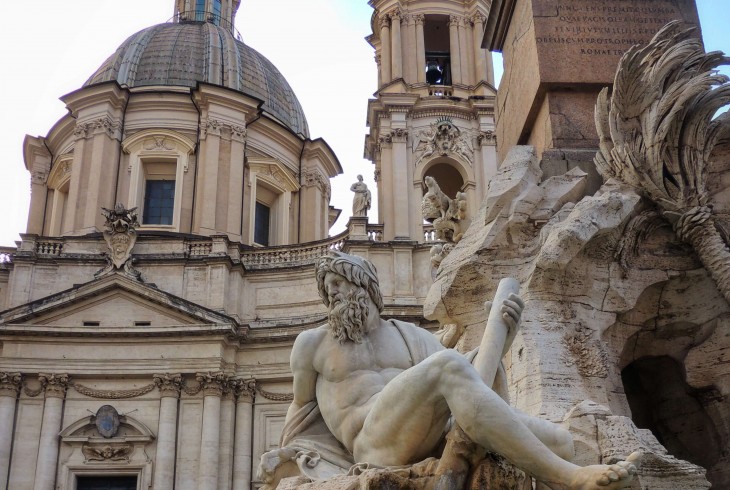Ah my Piazza Navona!...This is no square, but the great outdoors, a stage, a festival, purest glee.
- Gioacchino Belli
There’s nowhere in the world quite like extraordinary Piazza Navona. Rome’s greatest and most thrilling public space, the long story of the piazza extends unbroken all the way back to antiquity, when the stadium of Domitian rose on this site. Constructed between 81 and 86 AD, the elliptical racetrack was in all likelihood the site of foot-races and athletic events, and was the first building of its type in the Eternal City. Nearly 2,000 years later, the distinctive oval shape of present-day Piazza Navona is an ever-present reminder of the site's ancient origins. But it’s the golden age of Baroque Rome that truly shaped the space we see today.
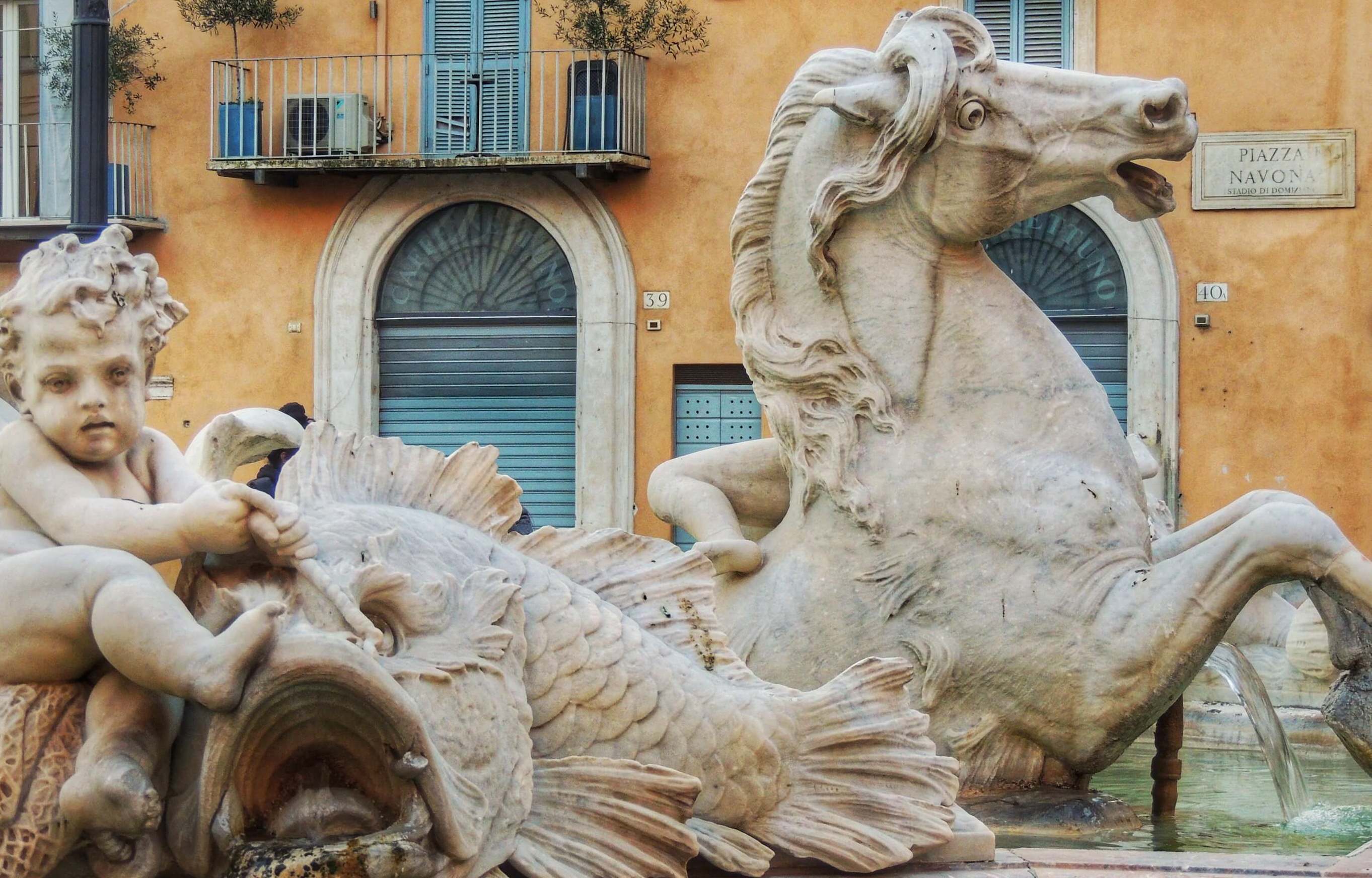
In the opening decades of the 17th century, the piazza was something of a hodge-podge. The all-powerful Pamphilj family had already begun transforming the massive square in their own image, with the massive Palazzo Pamphili on the piazza’s western side developing apace. But the piazza remained a rough and ready affair, still the preserve of street festivals and vegetable stalls unfolding around a large animal drinking trough at its centre.
All that was to change in the 1640s, thanks to two of Italy's greatest artistic sons: Gianlorenzo Bernini and Francesco Borromini. Standing proudly in the centre of the piazza, Bernini’s jaw-dropping Fountain of the Four Rivers encapsulates the drama of the Baroque like nowhere else, and is a must-visit on any tour of Rome.
Who commissioned the Fountain of the Four Rivers?
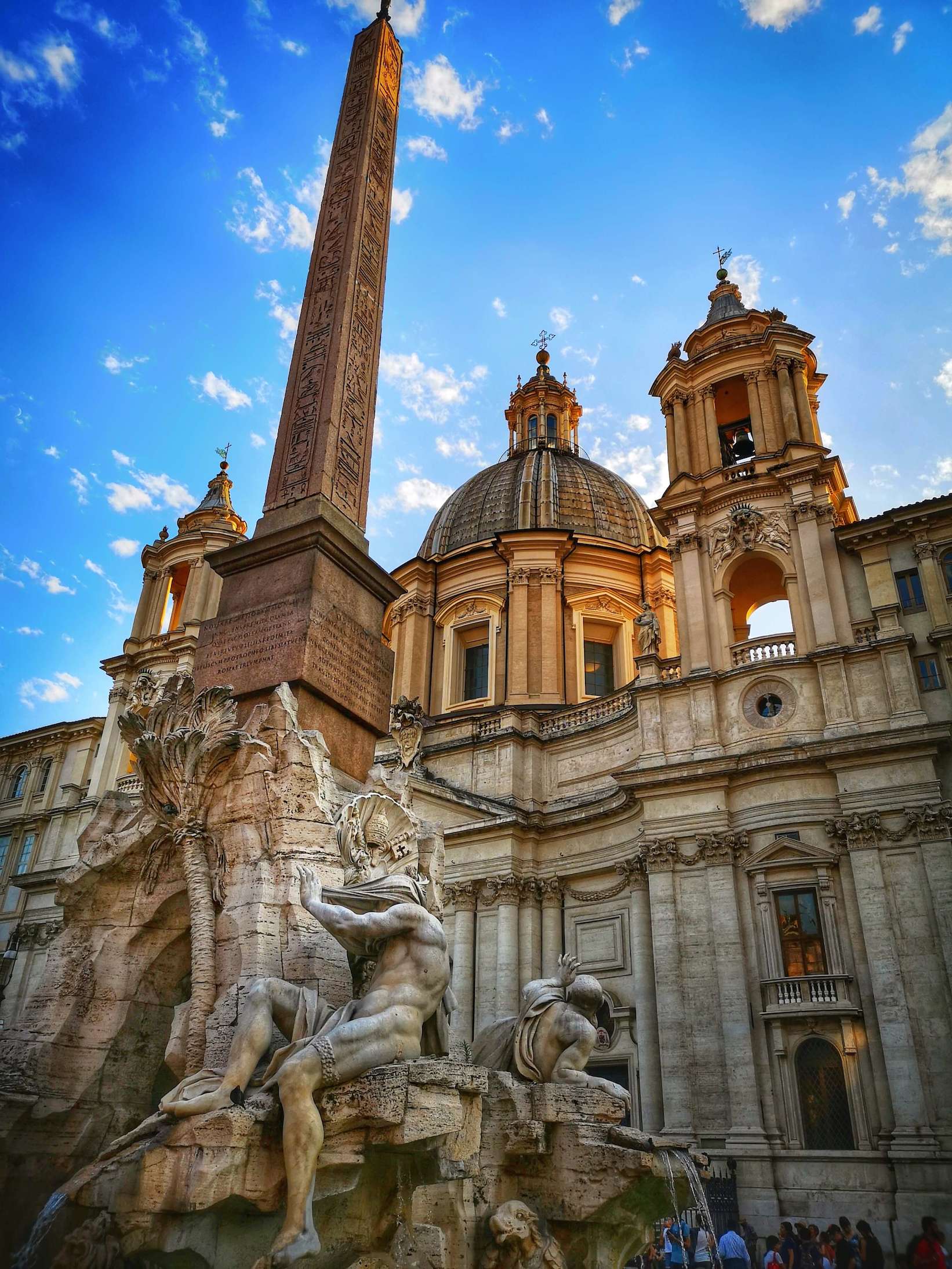
The Fontana dei Quattro Fiumi was commissioned by Pope Innocent X Pamphilj as part of his grandiose plans to redevelop Piazza Navona into an urban centre reflecting the glorious rise of his family. When Giambattista Pamphilj was elected pope in 1644, he wasted little time in commissioning a massive palace on the piazza from the architect Girolamo Rainaldi, and the Palazzo Pamphilj soon became an important centre of Papal power as residence of the pope's sister-in-law and closest confidante Olimpia Maidalchini.
After the completion of the grandiose Palazzo, the pope ordered the construction of a sumptuous adjoining church that doubled as the family's chapel. Begun in 1652 and principally designed by Rainaldi, his son Carlo and subsequently Francesco Borromini, the church's voluptuously undulating facade and flamboyant marble encrusted-interior make Sant'Agnese in Agone one of the foremost exemplars of Baroque architecture in Rome.
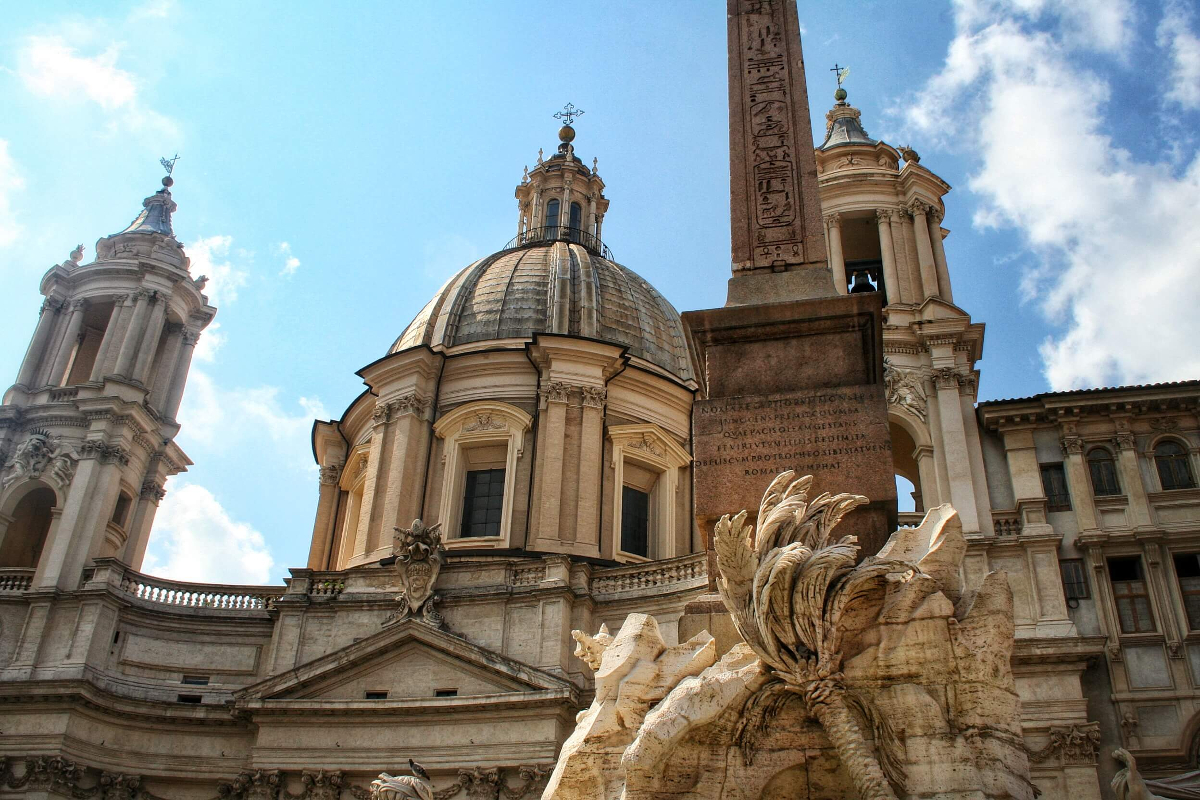
Before work on the church began, the Pope commissioned the third major aspect of his redevelopment of Piazza Navona: an enormous fountain in the centre of the square surmounted by an ancient Egyptian obelisk which was lying in pieces at the time along the Appian Way.
Despite being the leading sculptor in Rome, the entrusting of the fountain's design to Bernini was by no means a sure thing. Bernini had been the favourite artist of Innocent's hated predecessor Urban VIII Barberini, and had endured four long years in the wilderness as the Pamphilj pope denied him papal patronage.
How did Bernini get the commission?

In addition to his toxic links with the Barberini clan, Bernini's reputation had recently suffered due to his disastrous interventions at St. Peter's basilica, where the twin bell-towers he designed a few years earlier had to be demolished due to apparent structural instability. Bernini's implacable enemy Borromini took full advantage of the scandal, sparing no effort in his attempt to fatally undermine his rival's reputation. According to legend, it required a cunning ruse to return Bernini to favour.

Firmly established in the Pope’s black books, Bernini was not originally amongst the artists invited to submit designs for the Pamphilj fountain. And yet, none of the proposals that made their way to the Pope quite cut the mustard. Sensing an opportunity, Bernini's friend (and Innocent’s nephew in law) Prince Niccolò Ludovisi convinced the sculptor to come up with a model of his own, and arranged for it to be smuggled into the Palazzo Pamphilj.
Upon seeing Bernini's pre-eminent design, Innocent was soon overcome by his own good taste, and had no choice but to put personal antipathy aside and hire Bernini to sculpt the fountain. ‘Those who do not want to employ Bernini,’ the pope quipped, ‘should not look at his work.' Genius, the moral of the story tells us, will always win out. Borromini was predictably furious, and Bernini's career was back on track.
Which rivers are represented in Bernini's fountain?

Looking at Bernini's design for the Four Rivers Fountain today, it's not difficult to see why the reluctant pope was won over. Monumental sprawling personifications of the Danube, the Ganges, the Nile and the Plate rivers recline on a rocky crag emerging from the rushing waters of the fountain, supporting the form of the ancient Egyptian monument soaring into the sky above.
The hollowed out grotto beneath this mass of travertine gives the impression that the obelisk is defying the laws of terrestrial physics, its massive weight unsupported - a perfect example of the kind of Baroque illusionism that was a calling card of the virtuoso Bernini.
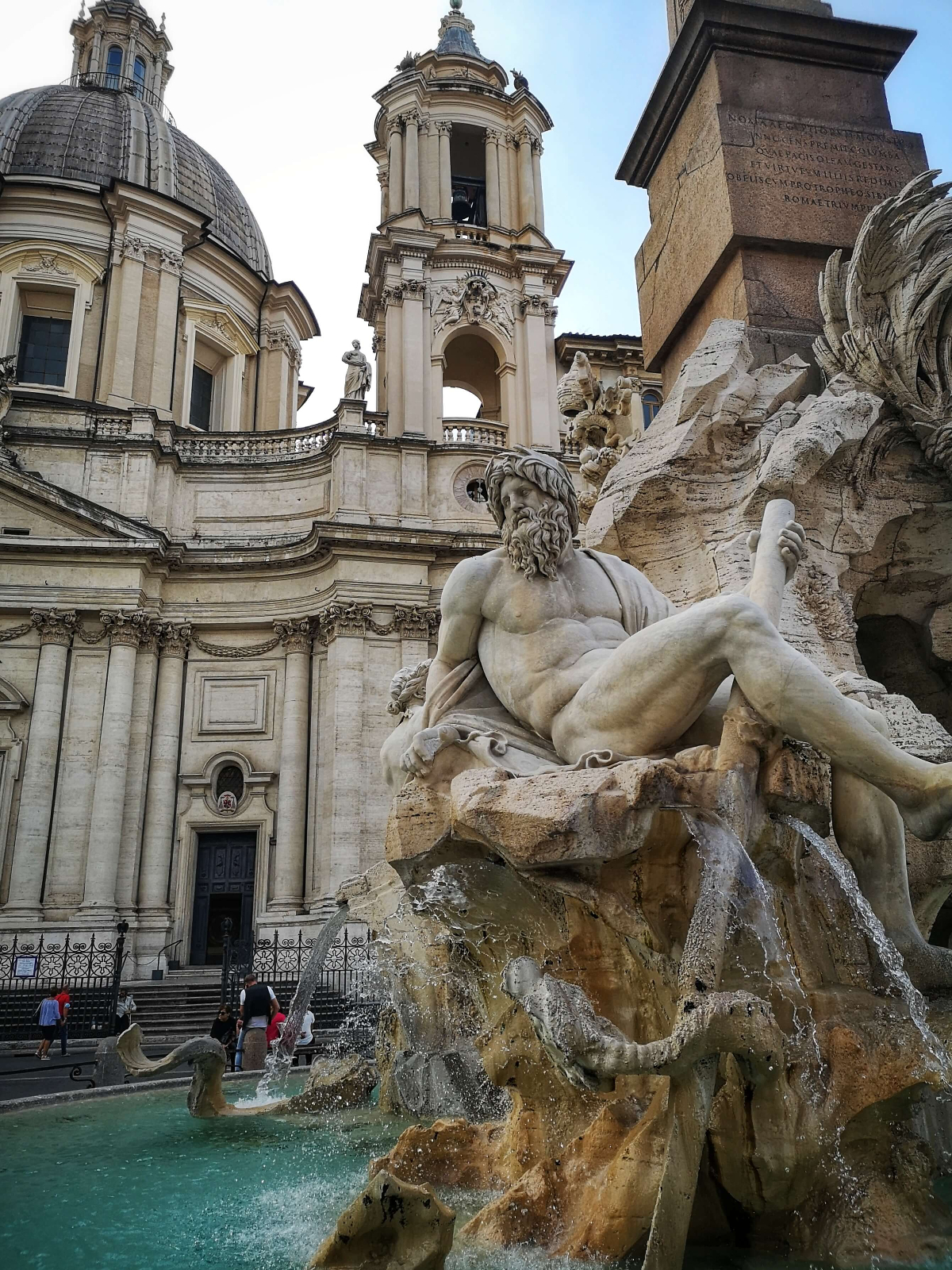
The river Ganges reclines lazily on his rocky perch, straddling an oar while a serpent writhes at his feet. For 17th-century Europeans this was Asia's pre-eminent river, lifeblood of the greatest cities of the Orient. His accompanying oar or rudder signifies the Ganges' easy navigability, an important factor for missionaries seeking to proselytise in India, whilst a palm tree sways in an invisible breeze nearby.
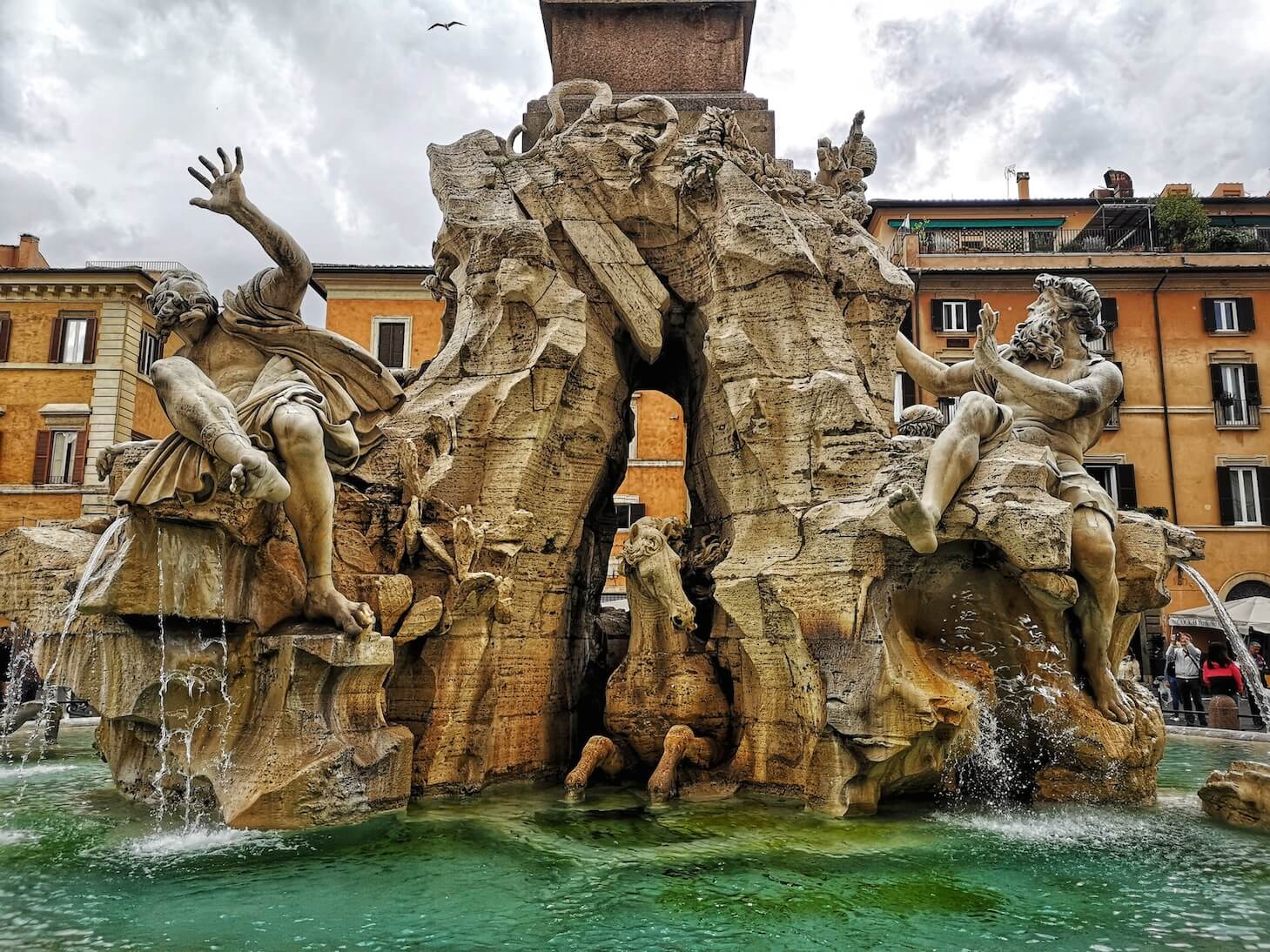
The river Plate is sprawled out amidst coins and armadillos, symbolic of the riches and exotic mysteries of the New World. His hands are thrown up in apparent surprise: a common legend asserts that Bernini made this unusual choice as a subtle dig at his rival Borromini, the river god being fearful that the architect’s church might at any moment topple over and crush him. As the fountain was completed before works on the church even began however, we can safely discount the anecdote as a tall tale.
The Nile meanwhile is accompanied by a lion, and covers his face in a shroud. Wags theorised that this was another jibe at Borromini, the figure unwilling to gaze on the distasteful work of the eccentric architect. More likely it is because the source of the Nile was unknown, an enduring geographical mystery immortalised in stone.
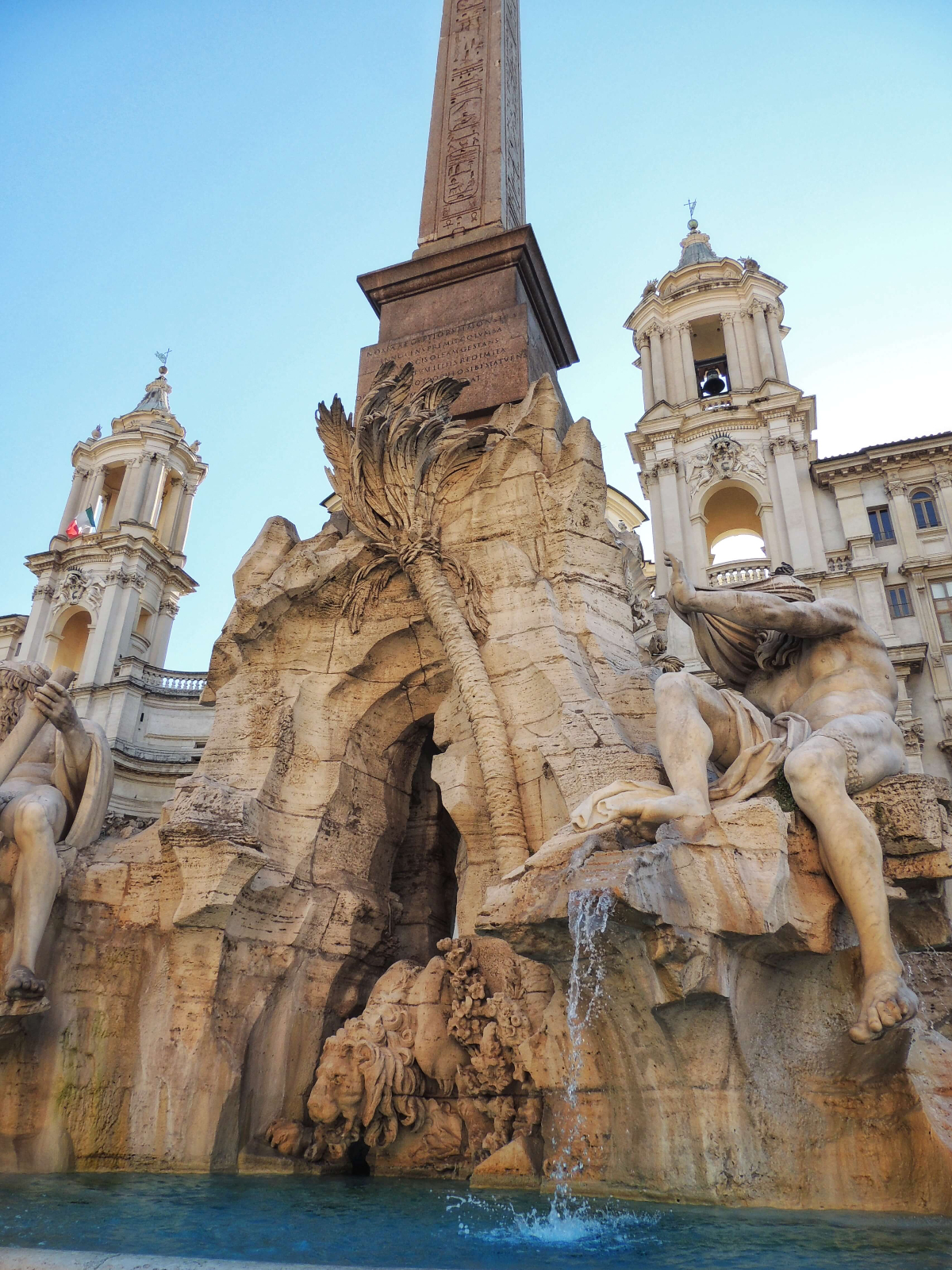
The stately European Danube finally soberly holds up the Papal arms, limbs straining with the effort. The horse that accompanies the Danube was personally sculpted by Bernini himself.
Although Bernini was responsible for the design of the fountain, much of the actual carving was carried out by his assistants: Antonio Raggi was responsible for the Danube, Giacomo Antonio Fancelli sculpted the Nile, Claude Poussin the Ganges and Francesco Baratta the River Plate.
What is the symbolism of Bernini’s fountain?
 The four rivers represent more than just the rivers themselves: as stand-ins for the four known continents and the four corners of the world, the personifications take on a global significance, the entire world in glorious marble microcosm. Symbolically speaking, then, the fountain points to the Catholic church's global mission and its attempts to unify the world under a Christian banner.
The four rivers represent more than just the rivers themselves: as stand-ins for the four known continents and the four corners of the world, the personifications take on a global significance, the entire world in glorious marble microcosm. Symbolically speaking, then, the fountain points to the Catholic church's global mission and its attempts to unify the world under a Christian banner.
And the symbolism runs even deeper: the four earthly rivers depicted by Bernini unmistakably also recall the four rivers of Paradise as described in the book of Genesis, unmistakably linking 17th-century Rome to the Garden of Eden.
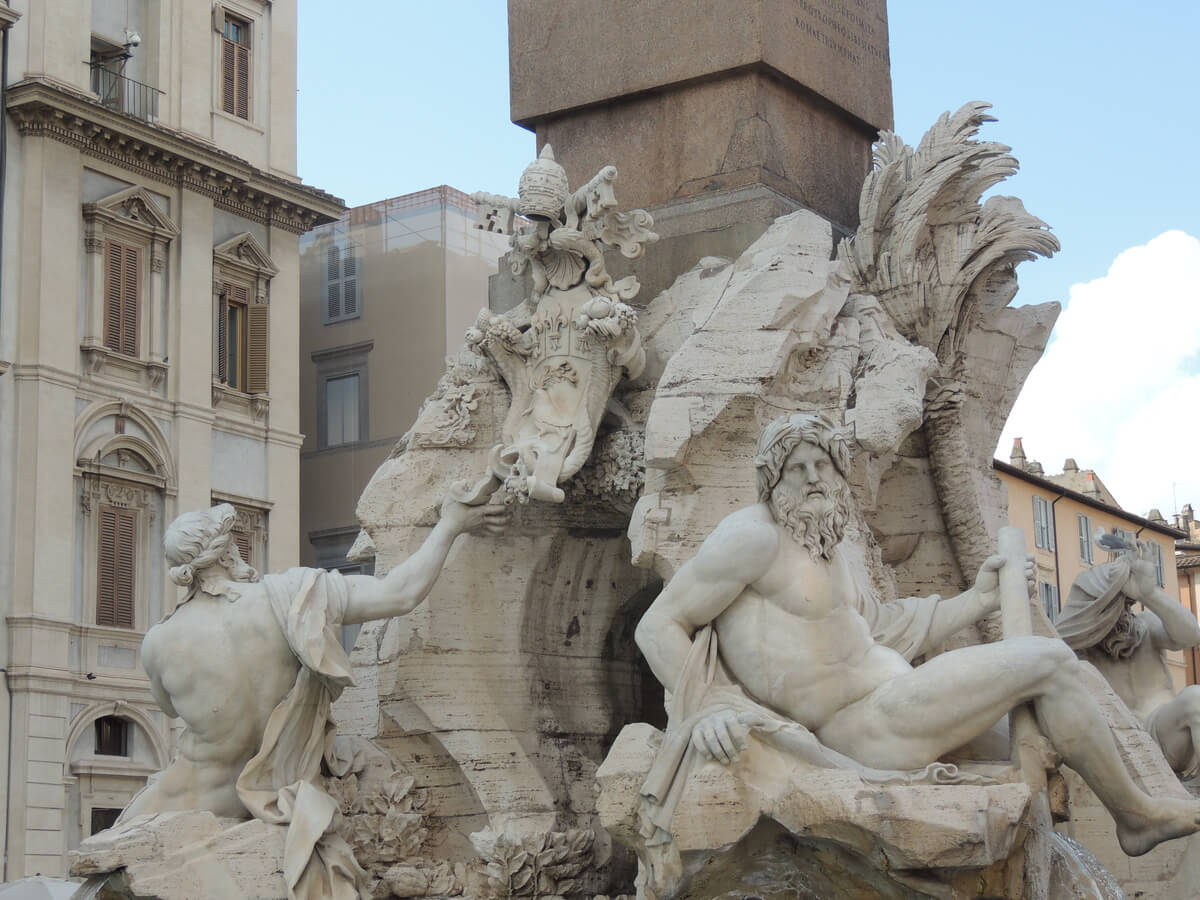
A closer examination of the fountain reveals that the unified Christian world envisaged by Bernini's sculpture clearly positions the pope as its spiritual and terrestrial ruler. The Papal tiara, keys and heraldic shield are recurring motifs, whilst a dove and olive branch (symbols of peace and the holy spirit, but also of the Pamphilj family) crown the obelisk above.
Bernini’s Legacy
 Bernini’s Four Rivers Fountain was immediately hailed a triumph by his contemporaries on its unveiling on 12 June 1651, with the seemingly gravity-defying obelisk provoking particular amazement at the sculptor’s preternatural abilities. The public acclaim that greeted the masterpiece paved the way for a full-scale rapprochement with the Pamphilj pope and opened a new chapter in the artist’s glittering career. The disaster of St. Peter’s bell-towers was well and truly forgotten.
Bernini’s Four Rivers Fountain was immediately hailed a triumph by his contemporaries on its unveiling on 12 June 1651, with the seemingly gravity-defying obelisk provoking particular amazement at the sculptor’s preternatural abilities. The public acclaim that greeted the masterpiece paved the way for a full-scale rapprochement with the Pamphilj pope and opened a new chapter in the artist’s glittering career. The disaster of St. Peter’s bell-towers was well and truly forgotten.
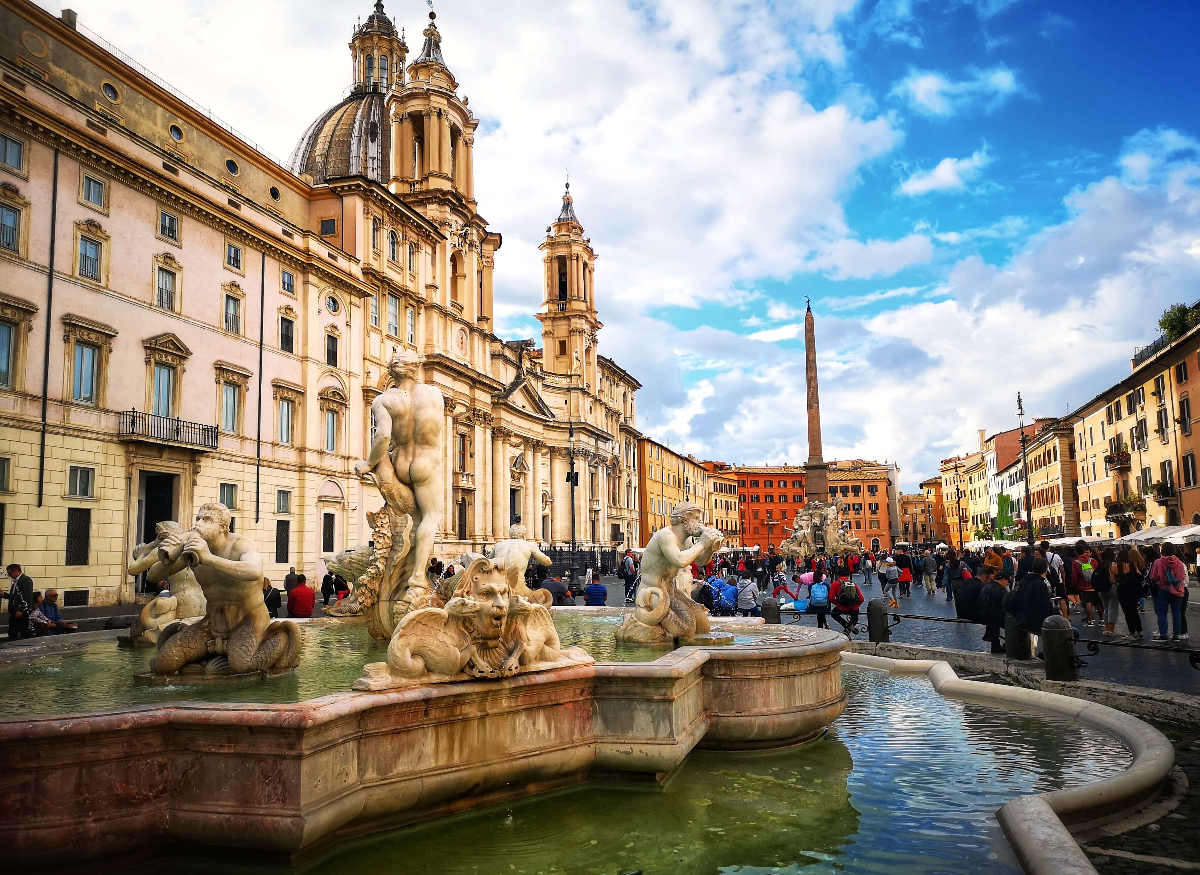 The only murmurings of dissent were voiced by the peasant vendors whose stalls on the piazza were removed to make way for the monument - according to a contemporary account, the Pope placed guards at the fountain around the clock to stop the frustrated ‘matriciani’ from vandalising Bernini’s masterpiece. The transformation from populist marketplace to Papal showcase was complete.
The only murmurings of dissent were voiced by the peasant vendors whose stalls on the piazza were removed to make way for the monument - according to a contemporary account, the Pope placed guards at the fountain around the clock to stop the frustrated ‘matriciani’ from vandalising Bernini’s masterpiece. The transformation from populist marketplace to Papal showcase was complete.
Piazza Navona is a must-see site in Rome’s historic centre, and forms one of the main stops on our introductory walking tour of Rome. Our Rome at Twilight stroll is the perfect way to experience the splendours of the Eternal City in the company of an expert local guide - check out Through Eternity’s website to book your place today!
